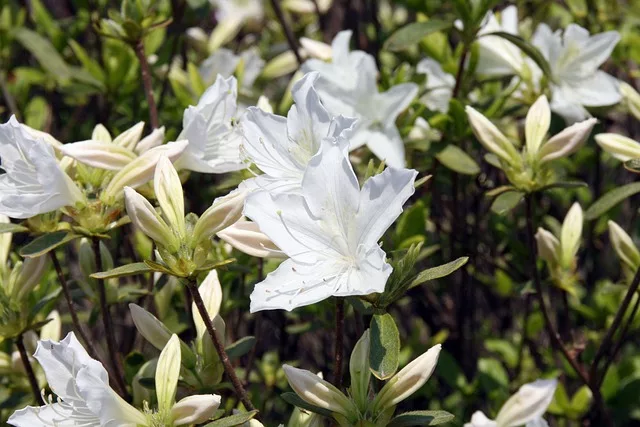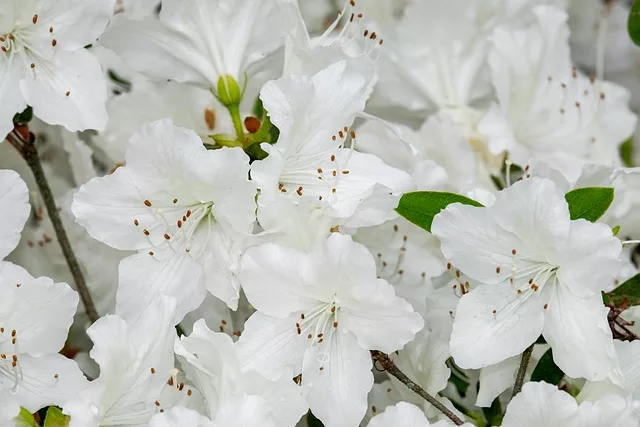Azaleas are famous for adding color and beauty to any garden or landscape. These stunning plants are known for their vibrant blooms, ranging from white and pink to red, purple, and even yellow. But if you’re considering planting azaleas, you may wonder how fast they grow. After all, you want to enjoy their beauty as soon as possible! In this article, I’ll provide an overview of the growth rate of azaleas, optimal growing conditions, and tips for maintaining healthy plants and answer the question: how fast do azaleas grow?
So, whether you’re a seasoned gardener or just starting, read on to discover everything you need to know about the growth of azaleas.
Introduction to Azaleas
Azaleas are a type of flowering shrub that belongs to the Rhododendron family. They are native to Asia, Europe, and North America and come in various colors, including pink, red, white, and purple. Azaleas typically bloom in the spring, and their flowers can last several weeks.
In addition to their beauty, azaleas are also valued for their hardiness. They are relatively easy to grow and can tolerate a range of soil types and weather conditions. However, to get the most out of your azaleas, it’s essential to understand their growth rate and how to provide them with the best possible growing conditions.

How Fast Do Azaleas Grow? – An Overview
The growth rate of azaleas can vary depending on several factors, including the variety of azalea, the age of the plant, and the growing conditions. Generally speaking, azaleas grow relatively slowly, with an average growth rate of around 6-12 inches per year. However, some varieties of azalea can grow up to 2 feet per year under the right conditions.
Understanding the Growth Rate of Azaleas
To understand the growth rate of azaleas, it’s essential to know a little bit about their biology. Azaleas are shallow-rooted plants that prefer acidic soil with good drainage. They also require regular watering and fertilization to maintain healthy growth.
In terms of their growth cycle, azaleas typically produce new growth in the spring, followed by dormancy in the summer and fall. Azaleas will often lose their leaves during winter, but this is a normal part of their growth cycle.
Optimal Growing Conditions for Azaleas
To get the most out of your azaleas, it’s essential to provide them with optimal growing conditions. This includes:
Soil: Azaleas prefer acidic soil with a pH between 4.6 and 6.0. The soil should also be well-draining to prevent soggy roots, which can lead to root rot.
Light: Azaleas prefer partial shade or dappled sunlight. Too much direct sunlight can cause the leaves to wilt and scorch.
Water: Azaleas require regular watering to maintain healthy growth. However, it’s important not to overwater them, which can lead to root rot. Water your azaleas deeply once or twice a week, depending on the weather conditions.
Fertilizer: Azaleas require regular fertilization to maintain healthy growth. Use a fertilizer specifically designed for acid-loving plants, and follow the instructions carefully.
Tips for Maintaining Healthy Azaleas
To maintain healthy azaleas, it’s essential to follow a few simple tips:
Pruning: Prune your azaleas in the late spring or early summer after they have finished blooming. This will help to promote new growth and keep the shrub looking neat.
Mulching: Mulch your azaleas with a layer of organic material, such as pine needles or bark chips. This will help to retain moisture in the soil and suppress weeds.
Pest Control: Watch for pests such as aphids, mites, and scale insects, which can damage your azaleas. If you notice any signs of infestation, treat your plants with an insecticide.

How fast do azaleas grow – FAQ
How often should I water my azaleas?
Water your azaleas deeply once or twice a week, depending on the weather conditions. It’s important not to overwater them, which can lead to root rot.
When should I prune my azaleas?
Prune your azaleas in the late spring or early summer after they have finished blooming. This will help to promote new growth and keep the shrub looking neat.
What should I do if my azaleas are not blooming?
If your azaleas are not blooming, it could be due to various factors, including insufficient light, improper pruning, or nutrient deficiencies. Check that your azaleas are getting enough light and water, and fertilize them with a fertilizer specifically designed for acid-loving plants.
Common Problems that Affect the Growth Rate of Azaleas
There are a few common problems that can affect the growth rate of azaleas, including:
Root Rot
Root rot can occur when the soil is too wet, and the roots become waterlogged. To prevent root rot, ensure your azaleas are planted in well-draining soil and avoid overwatering them.
Nutrient Deficiencies
Azaleas require a specific balance of nutrients to thrive. If your plants are not getting enough nutrients, they may exhibit stunted growth or yellowing leaves. Use a fertilizer for acid-loving plants to ensure your azaleas get the necessary nutrients.
Pests and Diseases
Pests and diseases can also affect the growth rate of azaleas. Look for signs of infestation, such as yellowing leaves, and treat your plants with an insecticide or fungicide if necessary.
Conclusion – How fast do azaleas grow?
Azaleas are beautiful and hardy plants that can thrive in various growing conditions. By understanding their growth rate and providing them with optimal growing conditions, you can enjoy vibrant blooms and healthy growth for years to come. Azaleas are an excellent choice for any outdoor space, whether you’re a seasoned gardener or just starting.

